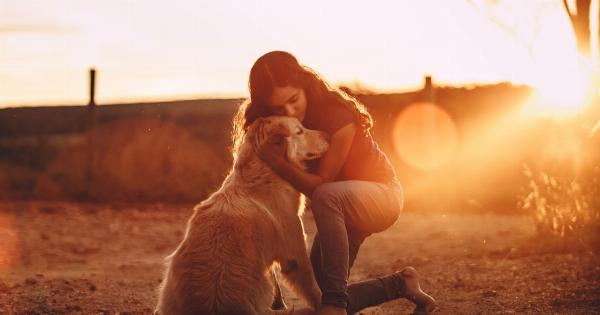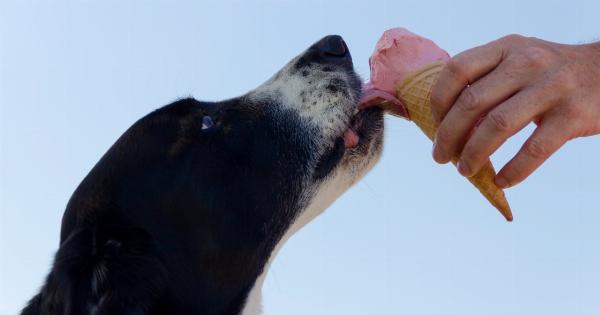Dogs are known for their loyalty, their affection, and their ability to bring joy to our lives. But sometimes, our furry friends exhibit certain behaviors that leave us puzzled and wondering what they could possibly mean.
It’s important to understand that dogs have their own unique way of communicating, and some of their behaviors may not be as straightforward as we initially perceive them to be. In this article, we will delve into commonly misunderstood dog behaviors and uncover their true meanings, allowing us to better understand and connect with our canine companions.
Barking
Barking is the most common form of communication for dogs, but it can be confusing to interpret why they are barking.
While it can indicate various emotions or needs, such as fear, frustration, boredom, or the desire for attention, it’s essential to look at the context in which the barking occurs. Is there an intruder nearby or perhaps another dog that your furry friend wants to play with? Understanding the triggers and the intensity of the bark can help decipher its true meaning.
Tail Wagging
Tail wagging is often associated with happiness and excitement, but it’s not always an indication of a dog’s friendly disposition. The position and speed of the wag can reveal the true meaning behind it.
A high, stiff wag may signify alertness or tension, while a low and slow wag might indicate fear or uncertainty. Additionally, a tucked tail during wagging can indicate submission or nervousness.
Jumping Up
Although it may seem like dogs jump up to greet us out of excitement, this behavior actually stems from their natural instinct to interact face-to-face.
Dogs jump up to establish contact and explore their environment, often motivated by the hope of receiving attention. While it can be endearing initially, it’s essential to discourage this behavior to maintain a calm and controlled greeting. Teaching your dog an alternative behavior, such as sitting, can redirect their energy and reinforce positive manners.
Pawing
Dogs use their paws to interact with their environment, including their human companions. Pawing can often be a sign of affection and a request for attention.
However, excessive pawing or scratching can also indicate anxiety, discomfort, or a desire to go outside. It’s crucial to assess the context of the behavior and address any underlying issues if necessary.
Chewing
Dogs explore the world through their mouths, and chewing is a natural behavior for them. Puppies, in particular, chew to alleviate teething discomfort and to explore their environment.
However, excessive chewing or destructiveness can be a sign of boredom, anxiety, or even a lack of proper mental and physical stimulation. Providing appropriate chew toys and engaging in regular exercise and play sessions can help redirect this behavior.
Growling
Growling is often misunderstood as a sign of aggression, but it is actually a form of communication that dogs use to express their discomfort or to maintain personal space.
Growling can indicate fear, resource guarding, or a warning to establish boundaries. It’s crucial not to punish or reprimand a dog for growling, as suppressing this warning can escalate the situation. Instead, it’s best to identify the cause of the growling and address it appropriately.
Whining
Whining is a vocalization that dogs use to express a range of emotions or needs. It can indicate anxiety, fear, frustration, attention-seeking, or pain.
Understanding the context and accompanying body language can help decipher the true meaning behind the whining. For instance, if a dog whines while pacing and avoiding eye contact, it could be a sign of fear or anxiety. Conversely, if they whine while wagging their tail and seeking physical contact, it may be a way of seeking attention or expressing excitement.
Rolling Over
When a dog rolls over and exposes their belly, it is often misinterpreted as an invitation for a belly rub or a sign of submission. While it can indeed mean those things, it can also indicate fear, anxiety, or an attempt to diffuse tension.
It’s essential to look for other accompanying body language, such as tense muscles or avoidance of eye contact, to determine the dog’s true intentions.
Tugging on the Leash
Tugging on the leash during walks is a common behavior that can be frustrating for dog owners.
While it can indicate excitement or impatience, it can also result from the dog’s desire to explore their surroundings, chase after something, or simply burn off excess energy. Proper leash training and consistent reinforcement of loose leash walking can help address this behavior and make the walks more enjoyable for both the dog and their owner.
Panting
Panting is the primary way dogs regulate their body temperature, so it’s normal to observe them panting after exercise or in hot environments. However, panting can also signify stress, anxiety, or pain.
If your dog is panting excessively without an apparent reason, it’s crucial to assess their overall well-being and seek veterinary advice if necessary.
Conclusion
Understanding the true meanings behind commonly misunderstood dog behaviors can significantly enhance our ability to connect and communicate with our furry companions.
By considering the context, body language, and accompanying behaviors, we can decipher the messages our dogs are trying to convey. Remember, each dog is an individual with their own unique personality and experiences, so it’s essential to observe and interpret their behaviors on an individual basis.
Developing this understanding can strengthen the bond between humans and dogs, leading to a happier and more harmonious relationship.





























